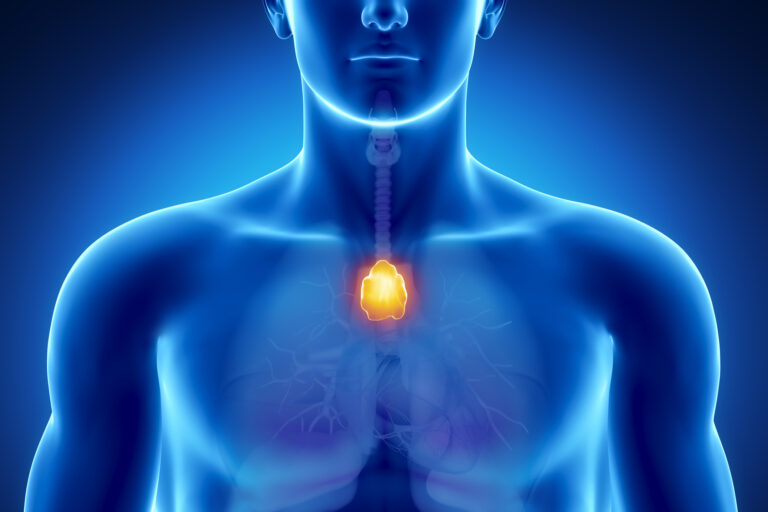
Myasthenia gravis (MG) is an autoimmune neuromuscular disorder that causes muscle weakness and rapid fatigue in the voluntary muscles (muscles we can move and control, such as the eye muscles). Myasthenia gravis has a sudden onset, and its symptoms may change and progress over time, affecting different body parts.
Speak to a Specialist About Copay Assistance
Based on the symptoms and the type of muscles affected, myasthenia gravis is classified into five stages — ranging from mild to severe. Since each stage responds differently to treatment, a thorough diagnosis is required for effective patient treatment outcomes.
This article discusses the five stages (classes) of myasthenia gravis that can help you identify the condition and seek medical attention in time.
The Five Stages of Myasthenia Gravis
Healthcare providers classify the stages of myasthenia gravis based on the symptoms and the extent of the weakness an individual is experiencing.
Early Stage: Class I
In the early stage, MG affects your eye muscles — in particular, the ocular muscles that control the movement of your eyes. Therefore, your eyelids become slightly weaker. This initial stage is called ocular myasthenia gravis since muscle weakness is only limited to the eyes.
During this stage, an individual may experience the following symptoms:
- Ptosis (drooping of eyelids)
- Diplopia (double vision)
- Trouble focusing
Around 85% of patients experience ptosis or diplopia as a first symptom of myasthenia gravis. These symptoms may fluctuate, such as becoming more pronounced with fatigue and improving with rest.
Since MG is difficult to diagnose in its early stages, a doctor may misdiagnose your ailment, believing the symptoms to be related to eye problems.
Mild Stage Myasthenia Gravis: Class II
MG may affect other muscle groups beyond the eyes during the first two years of onset. For instance, muscles that control facial expressions can become weaker, and as a result, people experience difficulty in smiling. However, the symptom’s severity remains relatively mild during this stage.
Generalized Myasthenia Gravis: Class III – V

Ocular myasthenia gravis often progresses to generalized myasthenia gravis within a year of onset if not diagnosed and treated earlier. In generalized myasthenia gravis, muscle weakness spreads to other parts of your body, such as the head and neck.
The muscles surrounding the head and neck are called bulbar muscles. They are involved in speaking, swallowing, chewing, and holding the jaw in place.
Around 15% of patients experience bulbar muscle weakness as an initial symptom. Symptoms include:
- Difficulty chewing or frequent choking
- Dysphagia (difficulty swallowing)
- Hoarseness (changes in pitch and quality of the voice)
- Dysarthria (difficulty speaking)
- Dropped-head syndrome
The severity of the symptoms remains relatively moderate during this stage. Furthermore, the classes III – V in generalized myasthenia gravis are further categorized based on the severity and extent of muscle involvement.
4. Myasthenia Gravis Stage: Class IV
In stage IV, muscle weakness in the upper limbs becomes more pronounced than in the lower limbs. Patients struggle to do everyday tasks such as gripping or lifting objects, climbing stairs, walking, and sitting up.
Muscle weakness may reach maximum severity within one to three years of onset in most people. However, with proper treatment, people can remain physically active.
Get Financial Assistance
5. Myasthenic Crisis: Class V
Class V is the severe stage of myasthenia gravis, also known as myasthenic crisis. In this stage, muscle weakness in the respiratory system causes difficulty breathing. The muscles that control breathing become severely weak and unable to perform properly.
This is a serious, life-threatening stage and requires immediate medical care, such as intubation or mechanical ventilation to maintain the airway.
Conclusion
Myasthenia gravis (MG) is a long-term but rare neuromuscular disorder, causing muscle weakness in different parts of your body — ranging from the eyes (ocular myasthenia gravis) to respiratory failure (severe stage). Understanding the stages of myasthenia gravis and the affected muscles can help you receive timely treatment.
REFERENCES:
- Suresh, A. B., & Asuncion, R. M. D. (2023b). Myasthenia gravis. StatPearls – NCBI Bookshelf. https://www.ncbi.nlm.nih.gov/books/NBK559331/
- Myasthenia Gravis Clinical Overview | MGFA. https://myasthenia.org/Professionals/Clinical-Overview-of-MG
- Hehir, M. K., & Silvestri, N. J. (2018). Generalized myasthenia gravis. Neurologic Clinics, 36(2), 253–260. https://doi.org/10.1016/j.ncl.2018.01.002
- Professional, C. C. M. Myasthenia gravis (MG). Cleveland Clinic. https://my.clevelandclinic.org/health/diseases/17252-myasthenia-gravis-mg
- Gilhus, N. E., & Verschuuren, J. J. (2015). Myasthenia gravis: subgroup classification and therapeutic strategies. Lancet Neurology, 14(10), 1023–1036. https://doi.org/10.1016/s1474-4422(15)00145-3













